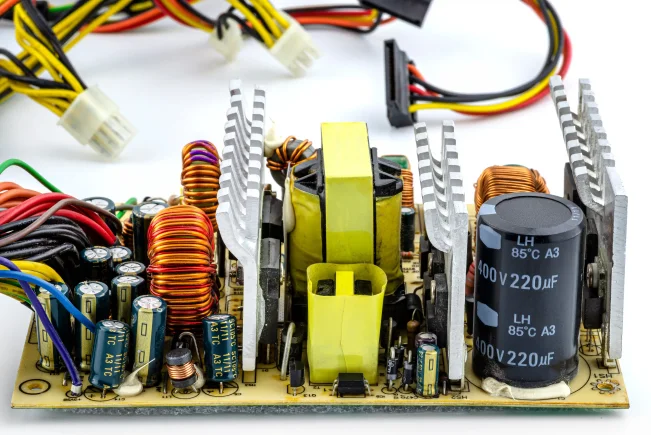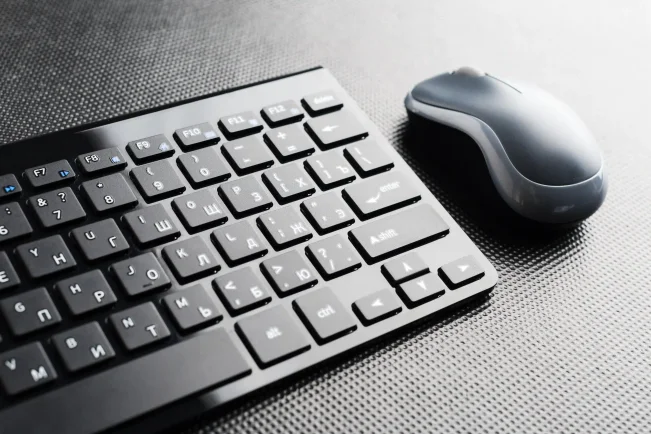Kodeclik Blog
The four essential parts of a computer
Every computer, from the sleekest laptop to the most powerful server, is built on a foundation of four essential parts which can be viewed as “layers”. Understanding these core layers will help you to understand how computers work and which part contributes to which function. So without further ado, here are the parts!
Layer 1: Core Processing & Memory

Modern computers begin at the “thinking core,” where instructions are executed and short-term data is held. This layer determines the raw speed of your computer and whether (and how) it can juggle multiple instructions simultaneously.
CPU (Central Processing Unit)
Often called the brain, the CPU is given instructions to execute, performs arithmetic/logic, and also coordinates every other component. Over the years, the CPU itself has multiple “cores” inside it, and faster clock speeds which let it handle more work in parallel and finish each step faster.
GPU (Graphics Processing Unit)
Originally built to draw pixels and render videos, a GPU contains thousands of tiny cores optimized for parallel math. It now accelerates everything from 3-D games to AI models, freeing the CPU from heavy graphics and data-crunching workloads.
RAM (Random Access Memory)
RAM is the computer’s short-term workspace. Think of it as a notepad that you maintain. Programs and data are copied into the RAM so the CPU can reach them in nanoseconds. More RAM lets you keep additional apps, browser tabs, or datasets open without slowing your computer down to a crawl.
Layer 2: Interconnect & Infrastructure

This layer contains the “piping” and “fuel tank”—moving bits around and preserving them after power-off.
Storage
Solid-state drives (SSDs) and hard-disk drives (HDDs) keep operating systems, applications, and files persistent. SSDs offer lightning-fast access with no moving parts; HDDs trade speed for lower cost per gigabyte.
Motherboard & Chipset
A large printed-circuit board that links every device electrically and logically. It hosts the CPU socket, RAM slots, firmware (BIOS/UEFI), and high-speed buses such as PCI Express that let components talk to each other.
Power Supply Unit (PSU)
The PSU converts household AC into the stable low-voltage DC rails required by delicate electronics. Quality units deliver clean power, regulate spikes, and supply modular cables for tidy builds.
Cooling
Fans, heat sinks, and sometimes liquid loops whisk heat away from CPUs, GPUs, and VRMs. Good thermal design sustains performance and prolongs component life.
Layer 3: Expansion & Connectivity

This layer provides hardware that personalizes and extends what the machine can do.
PCIe / Expansion Cards
Plug-in boards add discrete GPUs, sound cards, capture cards, RAID controllers, or extra USB ports. The high-bandwidth PCI Express interface lets them move data at tens of gigabytes per second.
Networking Hardware
Integrated or add-on NICs (Ethernet), Wi-Fi/Bluetooth cards, and cellular modems provide wired and wireless links to other machines, the internet, and peripheral devices.
Case / Chassis
More than a box, the case directs airflow, suppresses noise, and offers front-panel connectors. Form factors—from tiny mini-ITX to towering E-ATX—dictate upgrade space and portability.
Layer 4: Peripherals (Input/Output)

Everything you physically touch—or see and hear—lives here, turning digital bits into human experience.
Input Devices
Keyboards, mice, trackpads, game controllers, microphones, and scanners capture human actions, voice, or documents and translate them into data the computer can process.
Output Devices
Monitors, projectors, printers, speakers, and VR headsets present text, images, sound, or immersive worlds, transforming computations back into sensory information.
Combo Devices
Webcams, touchscreens, and headsets combine input and output in a single package, simplifying connectivity and enriching interactive tasks.
Putting it all together
Here is how everything works together: Power flows from the PSU through the motherboard to every part; the CPU and GPU process data held in RAM; results are saved to storage or displayed via peripherals; and expansion cards plus networking open new capabilities—all enclosed in a cooled, well-wired chassis.